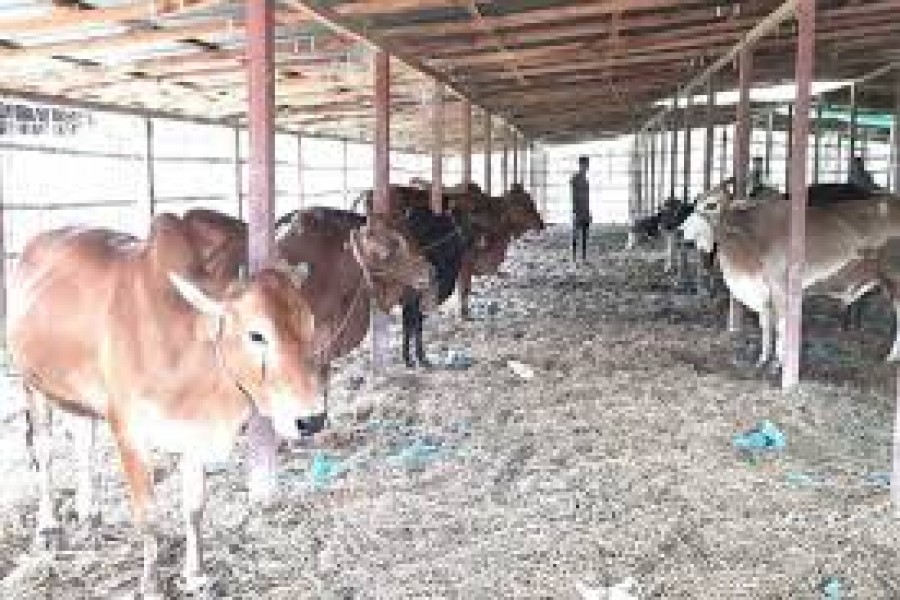With the Eid-ul Azha, the second largest religious festival of the Muslim ummah nearing fast, the arrangement of temporary markets for sacrificial animals is coming under scrutiny. Dhaka city, many areas of which have been declared red zones for high incidence of coronavirus cases, has already opted for a fewer number of such markets - 14 in Dhaka North City Corporation (DNCC) areas and 10 in Dhaka South City Corporation (DSCC) part. Whether reduction of the number of cattle markets will be of help in avoiding cluster contact is doubtful. In fact, the opposite may be the case. Fewer markets could invariably mean greater rush of intending buyers. The wiser option would be to have smaller markets with limited number of animals kept at a considerable distance from each other in open spaces on the city's periphery away from residential areas.
Although the authorities say there will be guidelines to be followed strictly, the ground reality is most likely to be different and not at all conducive to maintaining health protocols for both cattle traders and buyers. Involved here is an animal that finds itself in an environment completely different from where it grew up. Its behaviour should be taken into cognizance as well. If pictures of existing cattle markets in some parts of the country are any guide, there is cause for concern. Physical proximity is no issue there and many are huddling in the crowd without masks, let alone the question of wearing gloves and using hand sanitizer. As the pandemic is now peaking, better it would be to leave no scope for making compromise on physical distancing in the makeshift cattle markets - be those within the city limits or elsewhere in the country.
Only one or two areas in the capital city and other cities and towns are under strict lockdown but there are more such candidates right now. It would be foolhardy to invite the danger of cluster contacting through cattle markets. Planned in a most methodical manner in rows with adequate spaces in between two such rows, physical contact can be minimised if choosy buyers are allowed in a single file to visit the market. Obviously, the time for bargaining has to be cut short. If many such small cattle markets could be arranged in large vacant places, it would be easier to maintain the health protocols for both traders and customers.
The other option, though, is online trading of animals. Those who have the facilities and are well versed with smart devices should make full use of the technology in order to keeping them secure and help reduce the crowd in markets. A large number of city people have already become accustomed to the way of digital shopping. Why not extend the procedure to the purchase of cattle in a big way? To make this happen, however, there is a need for developing the system such as delivering the animal without hassle. A pool of vehicles - in this case, trucks - will be required. But such transaction ought to happen under the watchful eyes of committees and sub-committees formed to oversee the process.


